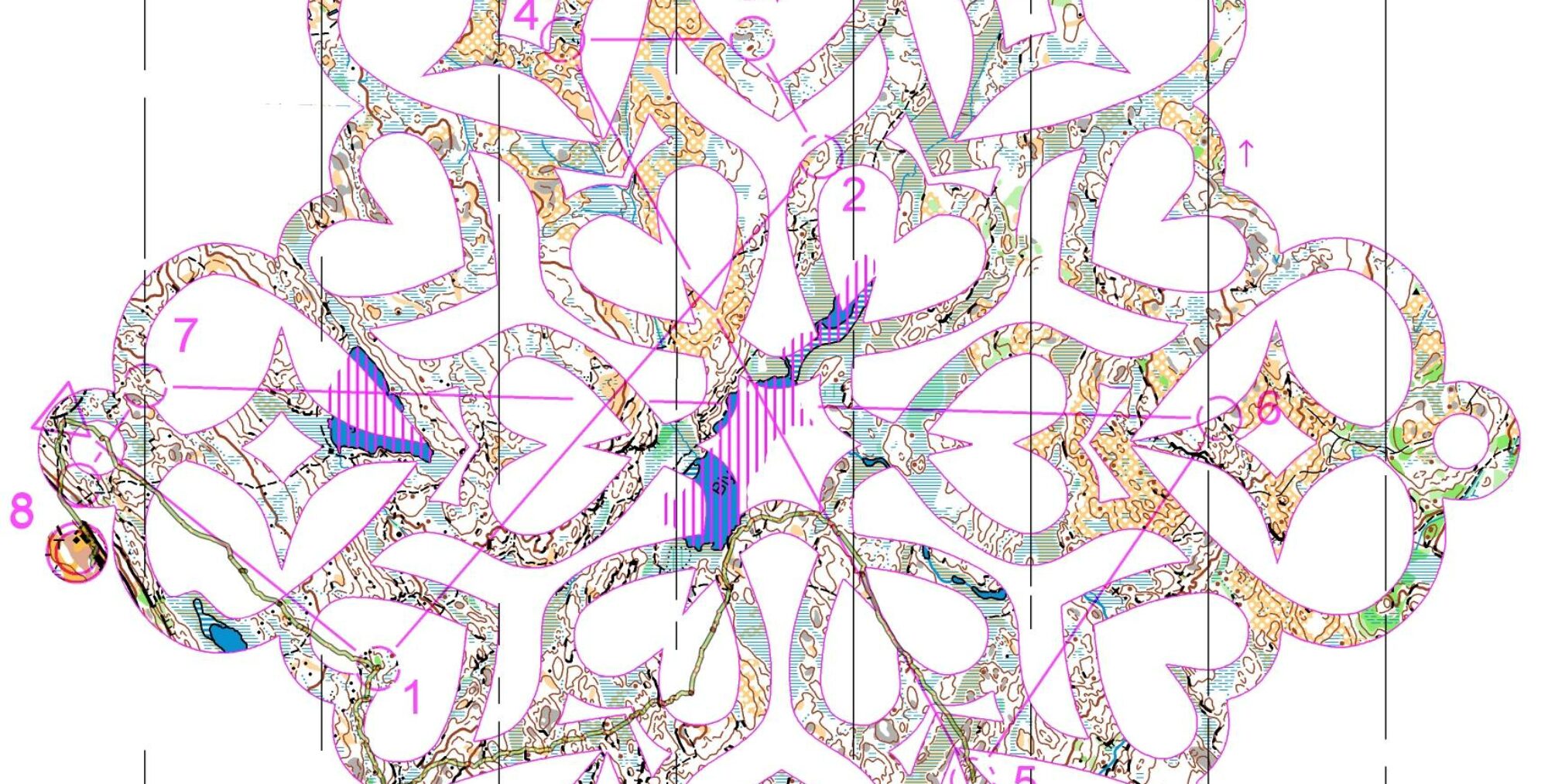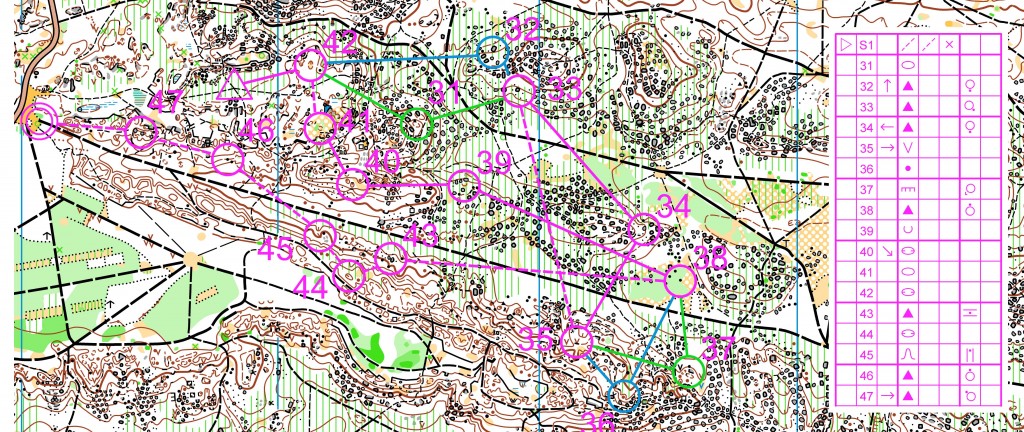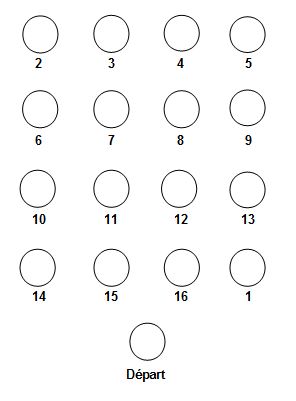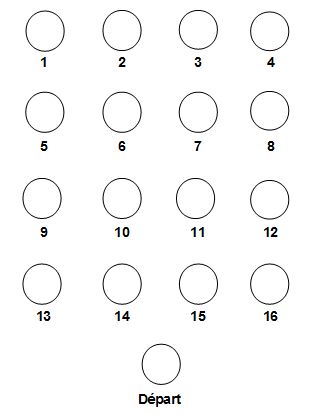Cat and mouse game
Descriptionn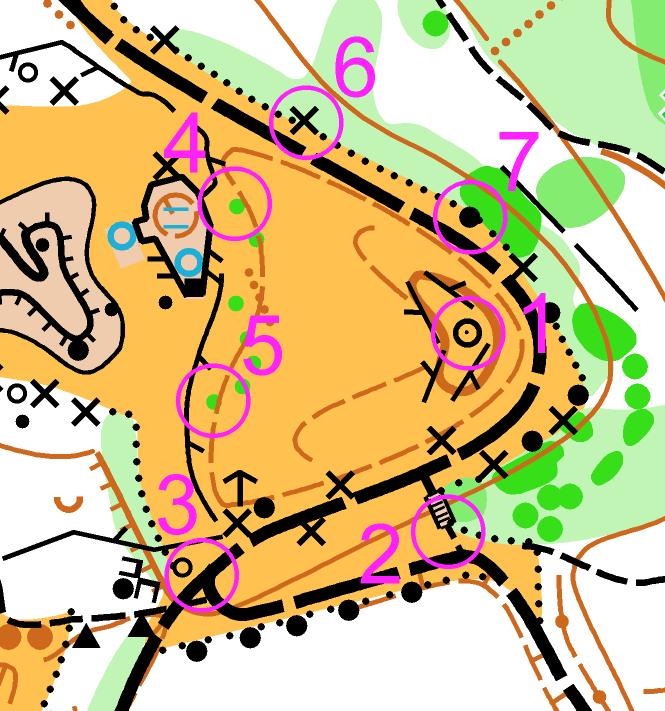 All the youngsters (mice) have a map, with the locations of the “houses”, where the cat can’t touch them. Each “house” is marked with a control without a number.
All the youngsters (mice) have a map, with the locations of the “houses”, where the cat can’t touch them. Each “house” is marked with a control without a number.
A cat is named. At the start of the game, the coach indicates the number of the house (6) for example. To avoid being touched by the cat, the “mice” must go to control 6. If a mouse is touched, it becomes the cat. The coach changes the house number regularly.
Alternative
Don’t put any controls
Once all the “house numbers” have been named by the coach, maps can be taken away from the mice, only the cat is allowed to keep it. This way you can see what has been memorised.
Comment
Nice to get warm, when it is cold
Contributor
Nathalie Rauturier
Mill
Description
Give to each runner a control number from 1 to 9 (for the adjacent example). Each runner must punch all the controls in order. If a runner starts with marker 2, he punches 2 to 9, then 1 and back. The objective is to chase the one in front without being caught by the one behind.
Alternative
Each runner can go and put out his control, do the course and then put down his control. The objective is then to succeed in punch all the controls before they are collecting. This alternative can only be organised with experimented runners.
Christine’s suggestion: If, however, the level of the runners is heterogeneous, it is possible to pre-marked one or more controls so that the objective of running on high speed is achieved.
Comment
The more homogeneous the group is, the more interesting and challenging the exercise is.
Contributor
Nathalie Rauturier
Fireworks
Description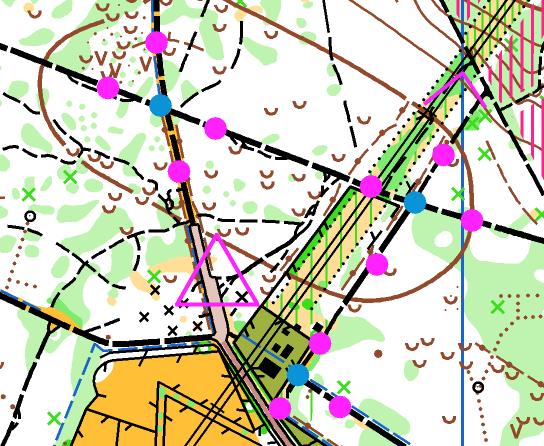 You have here the all controls map and an example of course below. At each blue point, you have between 3 and 4 possible combinations. So you can make many different courses.
You have here the all controls map and an example of course below. At each blue point, you have between 3 and 4 possible combinations. So you can make many different courses.
Go with your group to the blue point. At the given signal, “fireworks”: each runner goes on the path indicated by the purple dot on his map. We check that each runner is on the right path, and we go to the next blue point.
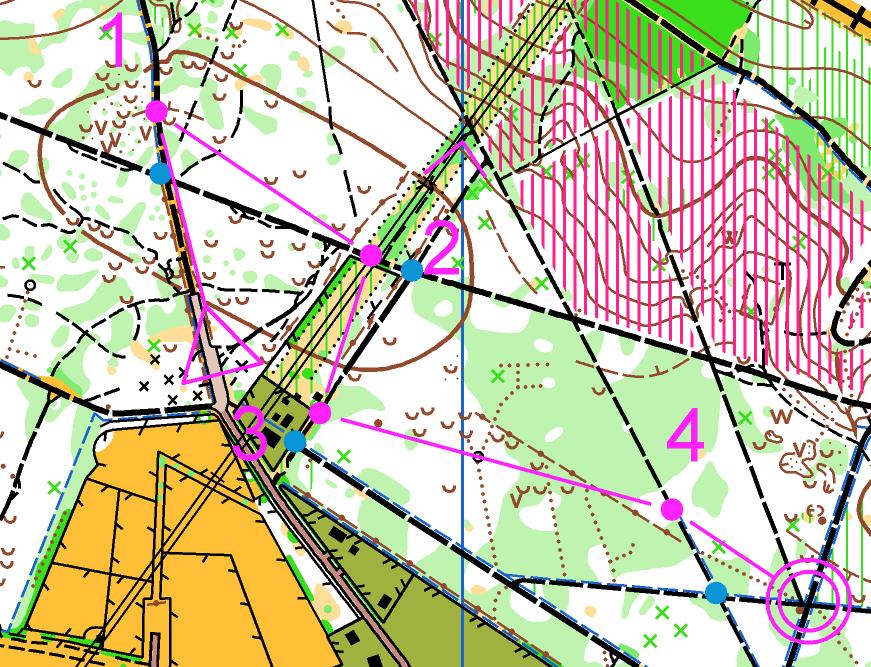
Alternative
Comment
- This exercise doesn(t need to put out controls and in a group, so perfect with a group of young beginners.
- plan many courses so that at each blue dot, the young people who find themselves on the same path are not always the same ones (otherwise they quickly understand that they do not need to think too much…)
- In order for the blue dot to appear on all the courses, create an object in Ocad and check the box “not used in the route projects”. (OCAD 9
)
Contributor
Nathalie Rauturier
Tranemo ( English )
Description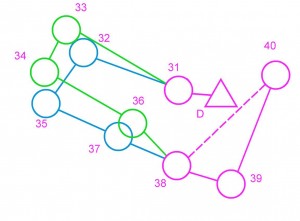 Relay situation
Relay situation
Mass start.
When you arrive at the first control (31), the runners go alternately on the blue or green branch. In practice, the first runner who punches th control, shouts the colour he has chosen (e.g. “blue”); the next runner to come shouts green, the next one blue…
At each control, with a blue/green choice, the first of a group to arrive shouts the chosen colour and the others behind alternate. If the runner arrives alone, he chooses his colour.
In the second loop, runners do the legs they did not do in the first rloop and take the purple dotted lines between the common posts (33 to 35 below) to avoid doing the same thing twice.
Alternative
- If the blue and green legs are of different lengths, the runners will be either hunted or hunter, a situation often found in the last relay
- if the branches are equivalent, we will simulate more first relays, with contact race
Comment
- Very interesting if you have a homogeneous group
- Be careful with the planning: the positions of the legs (e.g. 31 and 32) must not be too close, so that the second loop is really different from the first one
- It is more readable if you just write the codes and not the order
- If possible, provide an explanation, sitting down, with a practical example and put someone at the first control to check that it is understood
- After a fork, you can put one common control (ex 39) to allow runners to regroup
Contributor
Nathalie Rauturier
Snatch the bacon
Description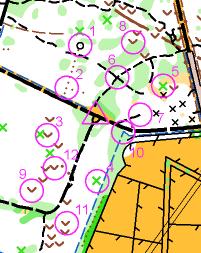 This is a variant of the “Snatch the bacon” game.
This is a variant of the “Snatch the bacon” game.
Let’s say you have 12 players. Make 6 teams of two. In each team you have one player A and one player B.
Print a very large scale map (1000th) with 12 controls.
At each control, you put between 1 and 6 cones of the same colour. Be careful to put different coloured markers on the controls that are closed to each other.
The maps are placed 5 meters in front of the teams, which are inline.
You call out a player (A or B), a number written on the map (from 1 to 12) and you specify the colour of the cone (if you don’t want them all to bring you the wrong cone).
The players go near the maps to memorise the location of the control you have just announced. They don’t know if there is 1 or 2 or 6 cones placed at that point. They will soon all run, not necessarily in the right direction ;).
When the players get to the cones, they take one and go back to the start. First come, first served, until all the cones are taken. Unlike the real game of beret, only the “snatching the bacon” is important, to add value to map reading.
Then you then call the other players, another number (and therefore another colour of cones).
Once the 12 numbers have been called, each team counts the number of cones they had. The team with the greatest number of cones wins.
Alternative
You can replace the cones with cards numbered from 1 to 12. Then the players can check that they are at the right place.
You can put chocolate for easter time.
You can make the controls more complicated to find, depending on the players you have.
Comment
Remember to note the correspondence between the colour of the cones and the numbers on the map before playing.
This variant of the “Snatch teh bacon” game is very dynamic and is pleasing all, young and old, beginner and experienced runners.
It also ensures that no one is in complete failure. No player will have 0 points at the end.
Be careful, with experienced adults, to give the rules of safe behaviour : shoulder strokes to destabilise the competitor when approaching the cone are forbidden for example!
Contributor
Nathalie Rauturier
Tag party
Description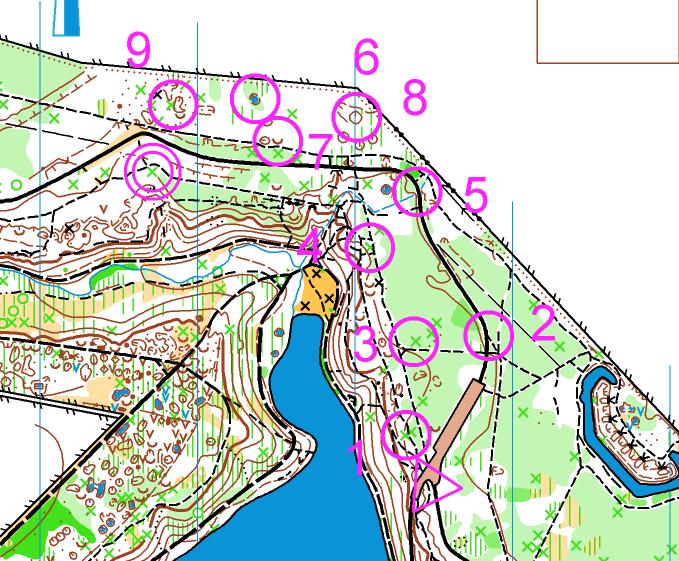 You designate a “Tag Man” called “Sparrowhawk” in french, the others are called players.
You designate a “Tag Man” called “Sparrowhawk” in french, the others are called players.
Everyone has a map, with controls to punch.
At the start, the players set off towards the finish. They have to punch any 5 markers without being touched by the sparrowhawk. The sparrowhawk leaves 5 minutes after the group and must try to hit as many players as possible. Once touched, the player becomes another sparrowhawk.
The sparrowhawk wins if he has hit half of the players.
In order to be able to recognise which players have been hit or not, the players can be given a bandana. As soon as they are hit by the sparrowhawk, they take off their bandana.
Alternative
Many variations can be found:
- number of sparrowhawks at the start
- time between the departure of the group and the sparrowhawk
- number of controls to be punched before taking refuge at the finish
Comment
This exercise requires participants to remain focused on map reading, while making sure not to be hit by the sparrowhawk.
Contributor
Nathalie Rauturier
Numbered cones
Set up a network of 17 cones. Number the cones on the drawing .
Print out cards by shifting the numbers of the cones. You get 16 different cards (see the example beside).
Hand out your cards. Call out a number. Each person has to go to the corresponding cone ( nobody will be on the same one, except if you have more than 16 runners).
Alternative
- change the location of the start cone to confuse the runners (the orientation of the map has changed)
- call out one number, then another one, without returning to the start
Comment
If you have 10 young people, hand out cards with numbers for the first cone, which “are following” each other ( 1,2,3 …). When you call “12” for example, you will immediately see who made a mistake, because the runners should be on cones next to each other. It is convenient not to have to check that each person is at the right place.
Contributor
Nathalie Rauturier
